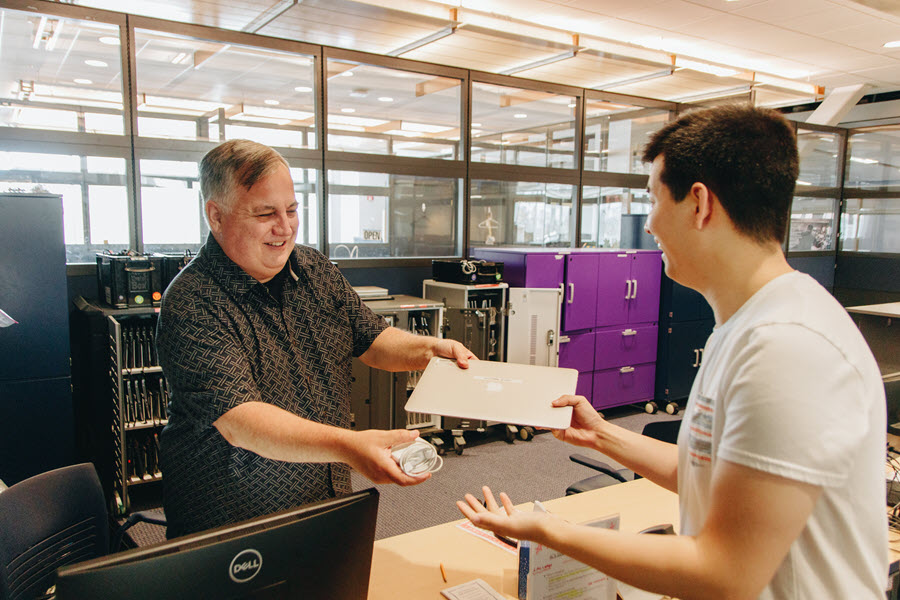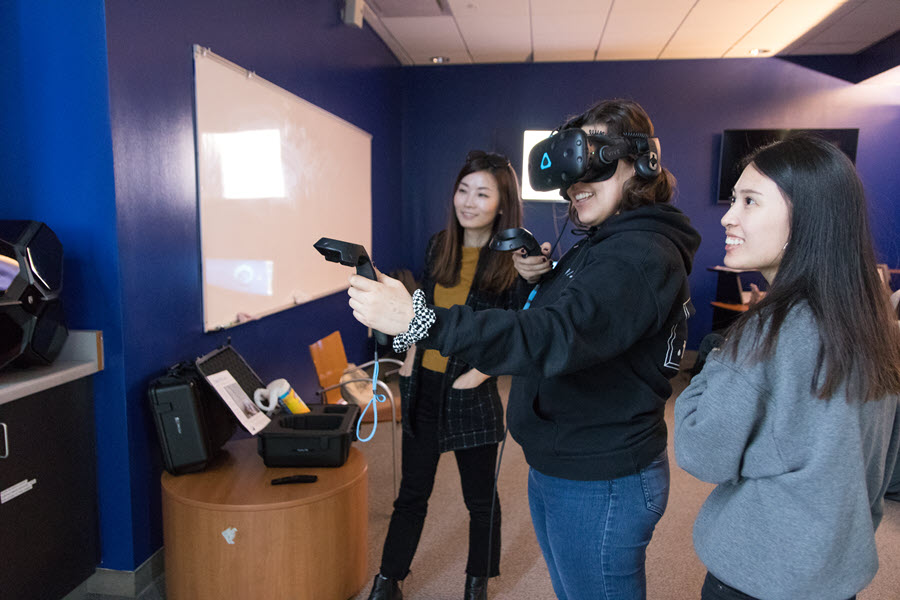REALM Project
REopening
Archives, Libraries,
and Museums
Resources
Resources > An academic librarian shares how staff adapted to meet student needs
Pandemic perspectives: An academic librarian shares how staff adapted to meet student needs
Jon Oakes is the technology labs coordinator for the San José State University Library, a combined public library and university library located in downtown San José, California. Jon shares his experiences during the pandemic, including adapting services to virtual, developing new skills, and connecting students with the library in a changed campus environment.
The interview has been edited for length and clarity.
How has the pandemic affected the way you see the future of university libraries?
I think there’s a consensus that in the future, this type of situation—be it a pandemic or natural disaster—will force us to go “virtual” again. So, when I’m making plans for programs, events, or new services, a part of that planning is now thinking about how to gracefully pivot from in-person programs to virtual offerings.
My skillset has allowed me to explore virtual 3D spaces using virtual reality and game development tools to make exhibits and social gatherings for users. It was moderately successful, and I learned a lot about how to get people engaged. I think libraries should look at VR or at least desktop 3D (virtual spaces in a browser) as a way of providing better social experiences compared to Zoom meetings.
The other thing we need to now think about when designing spaces is safety and hygiene. These were always a factor but now take on a new dimension when you have multiple people trading laptops, VR gear, electronics tools, and using tight workspaces.

How has the pandemic changed the work that you do?
Prior to the pandemic, I encouraged physical, hands-on group activities. And I hope to return to that! But currently I’m thinking about projects that individuals can do remotely and independently. It’s particularly challenging since most of my areas deal with physical resources that students don’t currently have access to. To handle that, we’ve had to slow way down on our reservations to allow time and effort for cleaning, airing out spaces, and planning programs accordingly.
What are some of the positive changes that have been made in your workplace since the pandemic?
The conscious attention to the health and well-being of our faculty, staff and students! Obviously, COVID-19 puts a focus on this, but we’ve also added programs that address work-life balance, mental wellness, and building social connections between library employees, and we have generally created a culture of “checking in” with each other. I’d like to see this continue because I feel it creates strong relationships and a culture of being united in a common set of goals.
What do you miss most about your "pre-pandemic" work life?
The energy level that existed in the students and faculty was much higher pre-pandemic. Not that people aren’t still working hard, but the amount of attention and energy that they can give toward social and extracurricular events and programs is diminished because they must manage their exposure risks. I miss the carefree hustle of pre-pandemic life.
What do you see as being the biggest impact on students?
Half of our students have never been to the library! In fall of 2019, freshmen were just getting oriented to college life. By spring 2020 – fall 2021 (18 months into the pandemic), school was all virtual. Now most classes are virtual. The campus culture has really suffered because of this. The thread of tradition and practice and student-to-student institutional knowledge has been greatly affected. We’re going to have to rebuild it, teach students how to use campus resources, and recruit and train student “evangelists” to help rebuild the campus spirit. Because we bridge nearly two years of school time, we have juniors who have never really spent time on campus or come to my programs, or had teachers lead them to the VR lab, so the pipeline of interested students who are familiar with what we do and comfortable engaging with us is greatly diminished.
And from a library perspective, it’s going to take a lot of outreach and marketing to let them know that the building in the corner of campus is not just a tower of old books and quiet study spaces.
What do you see as being the biggest impact on staff?
For the past 16–18 months, we’ve all had to reinvent our jobs. We’ve been working remotely, independently, and have had to figure out how to move forward with our goals and careers. Now we’re reopening and have one foot in “COVID mindset” and the other in “post-COVID mindset, and it takes a lot more energy to exist in both worlds.

What have you learned from the pandemic that you're applying to your work?
A fun thing I learned a lot about was OBS (Open Broadcast Software) for producing livestreams and video content. About three months into endless Zoom meetings, I got bored with my appearance so I started spicing up my meetings (when appropriate) with fun animations and special effects. It’s not just for that though, I am now able to make more professional-looking instructional videos and help faculty do things like ‘picture in picture’ and interesting transitions for their presentations.
I also had time to learn new skills, such as aspects of AI, coding on different platforms, virtual desktop resources, etc. It was a great time to explore new ideas and learn new skills. I think it’s important to remember to carve out time to explore and not get stuck in operational ruts. Professional development needs to be more than just a conference or two every year. It should be part of our daily routine.
What was the biggest challenge for your job during the pandemic?
Managing distribution of our laptops was hard. In the beginning, we didn’t have a safe way to distribute or retrieve physical hardware during the pandemic. Our amazing IT group hacked together a solution using a locker system we had recently retired. It worked great, but the system we were using wasn’t designed for what we were doing so it was very time consuming. There isn’t enough time or the budget to put resources in place that perfectly match these new needs. “Making do” was all we had, and was good enough in the end. We managed to distribute hundreds of laptops to students, let them keep them for the full semester, and provided a touchless service that kept everyone safe.
A lot of the early phases of the pandemic felt like a scene from the movie Apollo 13 where the flight director throws a bunch of spare parts on a table and asks the engineers to design a complex air filter to keep the Apollo crew alive. We had to work with what we had in-house, no time for RFPs or significant purchases. We had to do it quickly and make it last for the duration. And—we did!
What resources do you wish had existed that would have been helpful for you during the pandemic?
We were mostly closed as a facility during the pandemic and are just now opening again, but one thing that became evident during the closure is that buildings are ‘living organisms’ and need constant maintenance and care, or things will go wrong quickly. I think it’s important to keep in mind that just because most people are working remotely at home, the buildings need as much, maybe more, and I think that allocating more resources to the physical operations of libraries and their buildings is needed.
What do you hope the next year will look like?
We’re healing. I think I hear that every day. And we’re not “over it.” We’re still every bit in a pandemic, but we’re working toward getting better and rebuilding relationships with students that are founded on trust and safety. The pandemic closed our building for almost 18 months, and I think it’s going to take at least 18 months post-closure to fully recover. And even then? We’ll never be the same.
Photos courtesy: Jon Oakes
